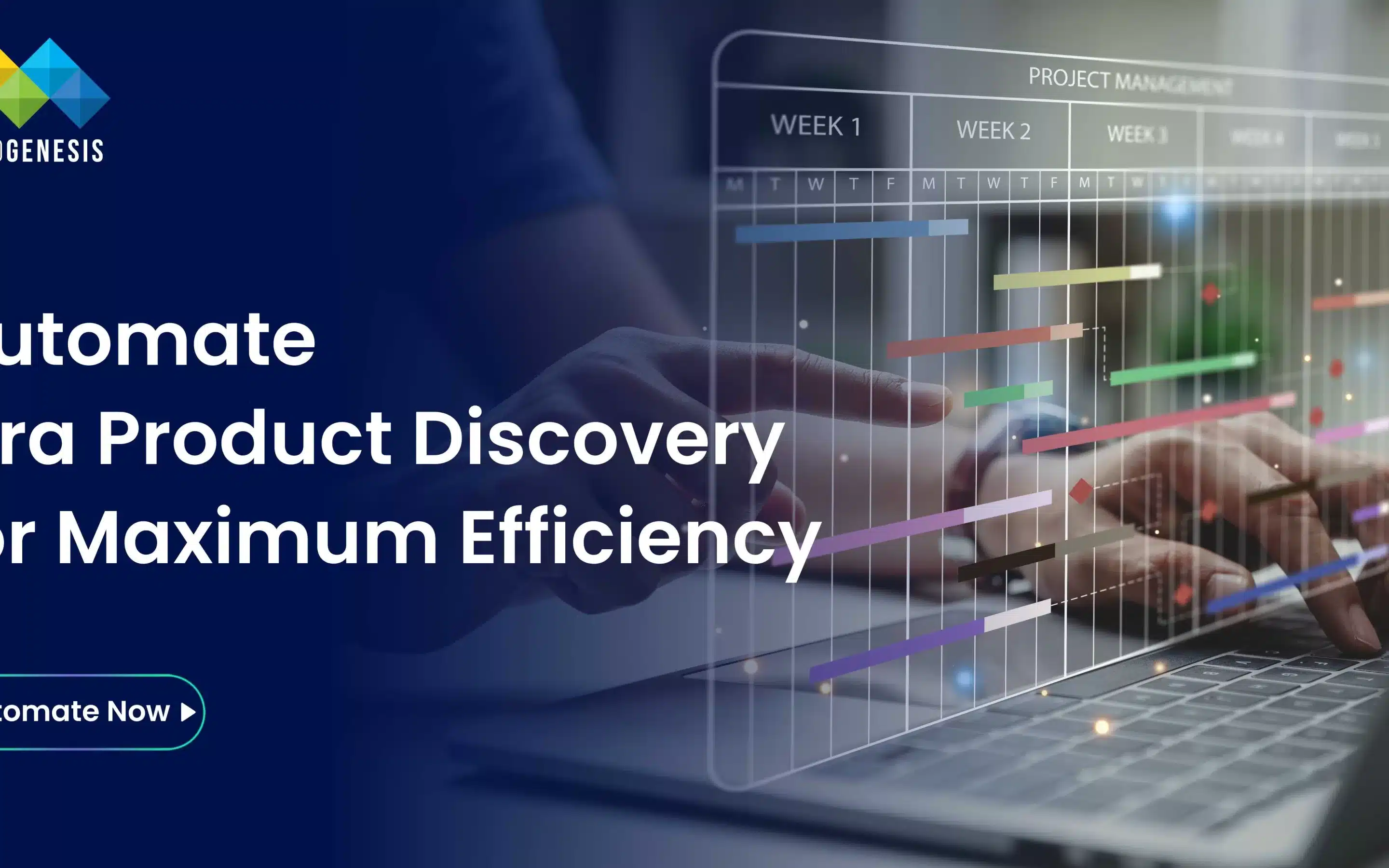In fast-moving product organizations, time is a scarce resource. Product managers, engineers, and cross-functional teams spend a significant portion of their day on manual tasks — updating spreadsheets, tracking ideas, sending notifications, or categorizing feedback. While these activities are necessary, they often distract from strategic work, such as validating ideas, engaging with stakeholders, and driving product innovation.
Jira Product Discovery addresses this challenge by offering automation features that reduce repetitive work, ensure consistency, and increase efficiency. Automation allows teams to focus on decision-making, prioritization, and delivering customer value, rather than administrative overhead.
This blog explores the power of automation in Jira Product Discovery, highlights practical workflows, and provides actionable tips for maximizing efficiency without compromising collaboration or transparency.
2. Common Manual Tasks in Product Discovery
Before diving into automation, it’s important to identify the tasks that most teams perform manually. These include:
- Idea categorization: Manually tagging or labeling ideas based on product areas or strategic themes.
- Priority updates: Calculating scores or adjusting priorities when new data arrives.
- Notifications and reminders: Sending messages to stakeholders about new ideas, updates, or approvals.
- Status tracking: Updating workflow stages such as “under review,” “in validation,” or “ready for implementation.”
- Reporting: Compiling dashboards or reports to track metrics like ideas submitted, implemented, or overdue.
Manual handling of these tasks is prone to errors, delays, and inconsistency — especially as idea volumes grow.
3. Automation Features in Jira Product Discovery
Jira Product Discovery offers a variety of automation capabilities that allow teams to streamline these repetitive tasks:
3.1 Rule-Based Automation
Teams can set up if-then rules to trigger automatic actions. Examples:
- Auto-tagging: If a new idea contains certain keywords (e.g., “performance” or “security”), automatically assign relevant labels or components.
- Status changes: Move ideas from “Under Review” to “Prioritized” once they reach a certain score threshold.
- Notifications: Automatically alert stakeholders when high-priority ideas are submitted or updated.
Rule-based automation reduces the need for manual oversight and ensures consistent processes.
3.2 Workflow Automation
Jira Product Discovery allows customization of idea workflows, which can include:
- Automated state transitions based on scoring or reviews.
- Dependency tracking, where completion of one idea triggers updates on related initiatives.
- Automatic linking of ideas to Jira Software issues once they’re approved for implementation.
Workflow automation ensures that ideas move seamlessly from discovery to execution, maintaining traceability and reducing bottlenecks.
3.3 Template Automation
Teams can create standard templates for recurring tasks:
- Idea submission forms with predefined fields and scoring metrics.
- Standardized labels or components for particular product areas.
- Preconfigured dashboards or reporting views.
Templates save time, reduce human error, and maintain uniformity across teams and projects.
4. Example Workflows Using Automation
4.1 Automating Idea Prioritization
- Assign RICE or custom scores to ideas automatically based on entered data.
- When an idea reaches a threshold score, trigger a notification to PMs for review.
- Automatically move approved ideas to a “Ready for Roadmap” status.
This reduces manual review cycles and ensures high-value ideas are addressed quickly.
4.2 Customer Feedback Integration
- Automatically import ideas from surveys, emails, or Slack channels.
- Tag ideas based on source (e.g., “Customer Request” or “Support Ticket”).
- Notify the product team whenever high-impact feedback is submitted.
This ensures timely capture and evaluation of critical insights.
4.3 Cross-Team Collaboration
- When a new idea is submitted, automatically notify design, engineering, and marketing stakeholders.
- Update linked Jira Software tickets to reflect changes in discovery status.
- Generate weekly dashboards showing idea progress, scoring updates, and upcoming reviews.
Automation fosters real-time collaboration and keeps teams aligned without manual follow-ups.
5. Advanced Automation Tips
While Jira Product Discovery offers powerful automation features, strategic implementation is key to maximizing value. Simply enabling automation without a plan can create clutter, redundant notifications, or confusion among team members. With expert Jira consulting, teams can design automation rules that align with workflows, enhance collaboration, and maintain control and efficiency across the product development process.
Leverage Conditional Logic
Automation rules should consider multiple conditions rather than a single trigger. For example, instead of sending a notification for every new idea, you can create rules that trigger only if an idea meets both priority score thresholds AND belongs to a specific product area.
This approach ensures that automated actions are relevant, targeted, and aligned with organizational priorities. It prevents overloading teams with unnecessary updates and keeps attention focused on initiatives that matter most.
Learn More: Integrating Jira with Confluence and Other Tools for Productivity
Use Scheduled Automation
Automation is not limited to reactive triggers. Scheduled automation allows teams to proactively manage recurring tasks:
- Generate weekly or monthly dashboards summarizing new ideas, prioritized initiatives, or pending approvals.
- Send reminder notifications for upcoming review meetings or deadlines.
- Automate routine updates to status fields or project boards at specific intervals.
Scheduled automation reduces manual effort, ensures consistency, and keeps teams on track without requiring daily intervention.
Integrate with Other Tools
Jira Product Discovery can integrate seamlessly with tools such as Slack, Confluence, analytics platforms, and CRM systems. Automation across platforms allows teams to:
- Notify Slack channels when high-priority ideas are submitted.
- Update Confluence pages with newly approved ideas or metrics.
- Sync analytics insights or survey results directly into Jira Product Discovery.
Cross-tool automation ensures that information flows effortlessly across systems, reducing data silos and improving collaboration.
Monitor and Optimize Rules
Automation is not a “set it and forget it” solution. Teams should regularly review automation performance to ensure it adds value:
- Identify redundant rules that trigger the same actions multiple times.
- Refine triggers to reduce irrelevant notifications.
- Adjust thresholds and criteria based on evolving team priorities or workflows.
Continuous monitoring helps prevent automation fatigue and ensures that the system remains efficient and user-friendly.
Document Automation Policies
Clear documentation is critical for consistent adoption across teams. Maintain internal guidelines detailing:
- How automation rules are set up and what triggers them.
- Expected outcomes for each rule.
- How to update or modify rules responsibly.
Documentation ensures that team members understand automation workflows, reducing errors and maintaining transparency and accountability.
Learn More:
6. Measuring Automation Impact
Implementing automation is only valuable if it delivers measurable benefits. Tracking performance ensures that automation contributes to efficiency, consistency, and collaboration. Key metrics include:
Time Saved
Estimate the hours saved per week by automating repetitive tasks such as tagging, notifications, or status updates. Quantifying time savings demonstrates the direct efficiency gains and justifies investment in automation.
Idea Processing Speed
Measure the time it takes for an idea to move from submission to prioritization or review. Faster processing indicates that automation is helping streamline decision-making, enabling high-value initiatives to reach execution sooner.
Consistency Metrics
Automation improves uniformity across processes. Track metrics such as:
- Accuracy of labels and categories applied automatically.
- Proper updates to status fields and workflow stages.
- Timely notifications delivered without duplication.
High consistency reduces errors, improves reporting, and ensures stakeholders have reliable data.
Stakeholder Engagement
Evaluate whether automated workflows improve cross-team collaboration. Metrics can include:
- Number of stakeholders actively reviewing ideas.
- Timeliness of feedback and approvals.
- Participation in prioritization or review sessions.
Automation should enhance communication and collaboration, not replace human judgment. Engaged stakeholders are a key indicator of successful automation adoption.
Continuous Analysis and Improvement
Regularly reviewing these metrics ensures that automation remains aligned with team goals. If time savings plateau or engagement drops, teams can refine rules, update workflows, or adjust triggers. Continuous monitoring turns automation from a static tool into a dynamic system that evolves with the organization.
7. Best Practices for Using Automation in Jira Product Discovery
- Start Small: Implement automation for repetitive, high-volume tasks first.
- Align Automation with Process: Ensure automation rules mirror your product discovery workflow and business goals.
- Involve Stakeholders: Include PMs, engineers, and designers in defining rules to avoid unintended consequences.
- Document Everything: Maintain clear records of automation rules, triggers, and workflows.
- Iterate Gradually: Refine rules based on feedback, new tools, or evolving team needs.
By following these best practices, teams can maximize efficiency while maintaining transparency and control over their product discovery process.
8. Case Study Example
A mid-size SaaS company struggled with hundreds of monthly feature requests from customers and internal teams. Manually triaging ideas consumed 20+ hours per week for the product team.
Implementation:
- Automated idea import from Slack and customer surveys.
- Applied scoring rules for RICE and custom metrics.
- Triggered automatic notifications for high-priority ideas.
- Linked approved ideas to Jira Software tickets for execution.
Outcome:
- Reduced manual triage by 70%.
- Cut idea-to-prioritization time from days to hours.
- Increased cross-team collaboration with real-time updates and notifications.
Automation transformed discovery into a scalable, efficient, and transparent process.
9. Conclusion
Automation in Jira Product Discovery is more than a convenience — it is a strategic enabler. By automating repetitive tasks, standardizing workflows, and integrating tools, product teams can work smarter and deliver faster. Partnering with the best IT company, like MicroGenesis, ensures seamless Jira automation setup, optimized workflows, and measurable productivity gains across the product lifecycle.
- Focus on high-value decision-making
- Reduce errors and inefficiencies
- Improve stakeholder alignment
- Accelerate the journey from idea to execution
When applied thoughtfully, automation turns Jira Product Discovery into a powerful engine for efficiency, collaboration, and innovation, helping organizations deliver better products faster.




